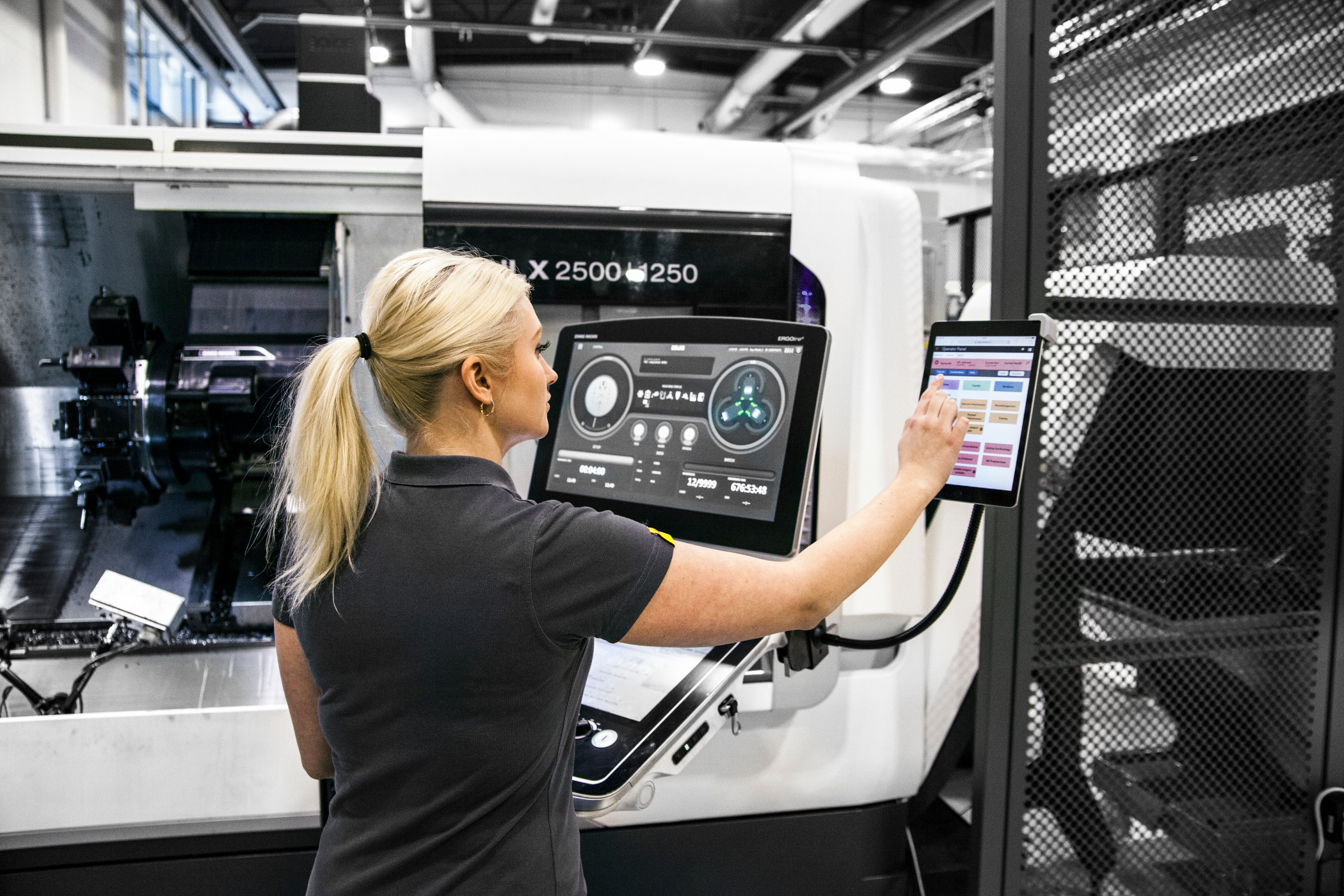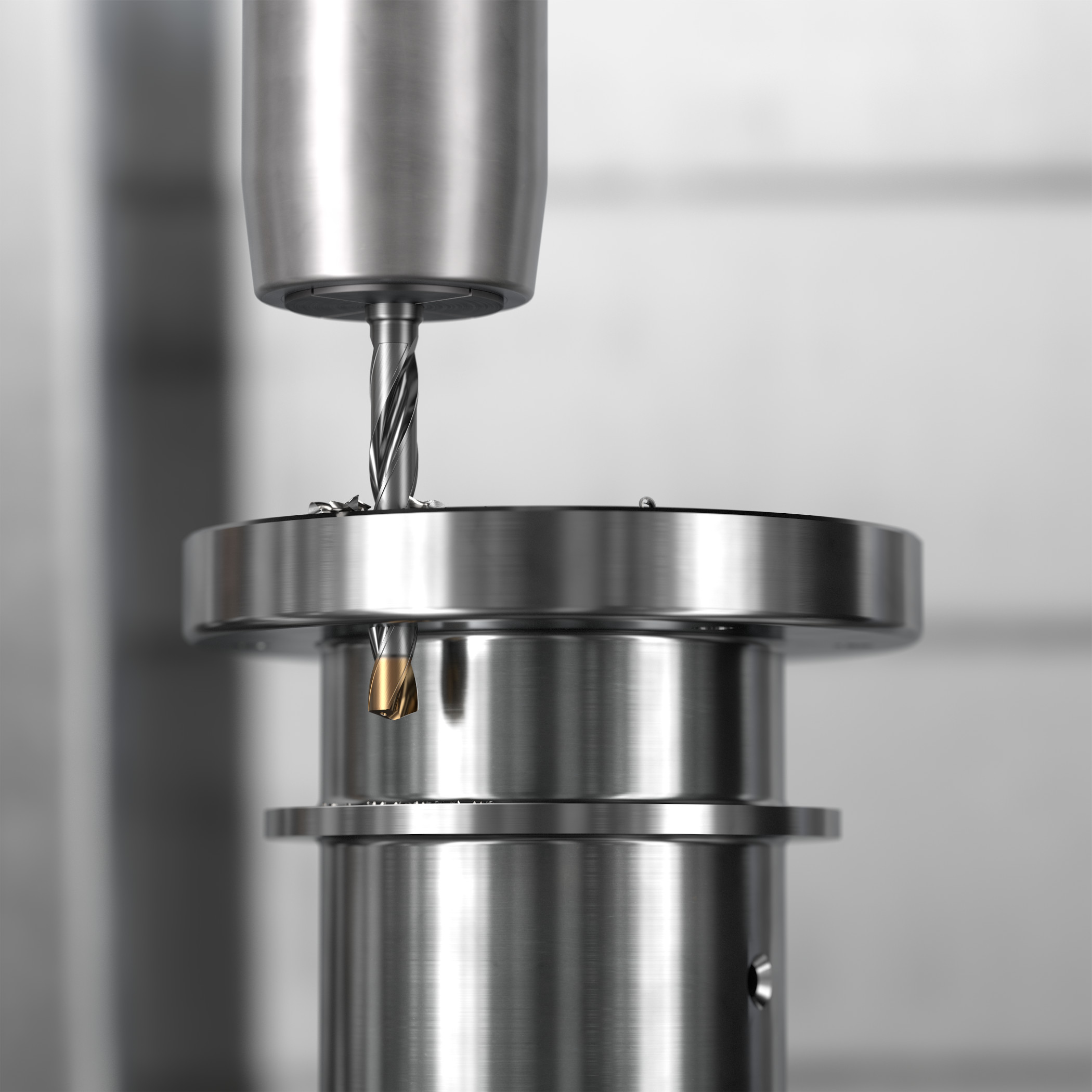By James Thorpe, global product manager at Sandvik Coromant
 Fewer than 30% of manufacturers have extensively adopted Industry 4.0 technologies, according to findings published in a new report, but manufacturers’ reluctance to go digital might have to change if they are to adapt to an unpredictable future.
Fewer than 30% of manufacturers have extensively adopted Industry 4.0 technologies, according to findings published in a new report, but manufacturers’ reluctance to go digital might have to change if they are to adapt to an unpredictable future.
The Industry 4.0 & Smart Manufacturing Adoption Report by IoT Analytics suggests that Industry 4.0 technology uptake is still low among manufacturers. Given that the advantages of Industry 4.0 are now so well understood, why aren’t more manufacturers digitalizing their processes?
One perception is that applying Industry 4.0 to existing production setups is expensive, when it actually doesn’t have to be. Another reason for the slow uptake might be that manufacturers see no reason to upgrade their existing tooling setups and processes. If it isn’t broke, why change it? Manufacturers in this category may be unsure how Industry 4.0 fits into their established way of doing things.
The truth is, automated Industry 4.0 technologies can greatly benefit manufacturers’ bottom lines. For instance, Sandvik Coromant found that a 20% increase in machine utilization can result in a 10% higher gross profit margin, and automated systems can massively increase machine uptime.
 Automated equipment can also support the growing trend of machining with limited or no human supervision. Today’s Industry 4.0 technologies, including sensors and machine learning, can also be beneficial in minimizing the number of production stops. Again, increasing profit. This includes stops needed to replace worn tooling, like drills.
Automated equipment can also support the growing trend of machining with limited or no human supervision. Today’s Industry 4.0 technologies, including sensors and machine learning, can also be beneficial in minimizing the number of production stops. Again, increasing profit. This includes stops needed to replace worn tooling, like drills.
Previously, operators had to rely on manual monitoring to detect wear in machine tools. A report by PricewaterhouseCoopers (PwC), COVID-19: What it means for industrial manufacturers, points to the Industrial Internet of Things (IIoT) as an alternative. An example of this is Sandvik Coromant’s latest CoroPlus Machining Insights platform, an expansion of the company’s CoroPlus suite of connectivity software.
Using Machining Insights, CNC machines can transmit information in higher volumes through an Ethernet connection. This includes manufacturing data to improve workshop efficiency and overall equipment effectiveness (OEE).
This isn’t limited to new machinery. Most machines can be connected to the network, and there are adapters for older machines to make them compatible. In other words, Industry 4.0 can be integrated easily, even with legacy hardware.
Predictable wear
Machining Insights is designed to give manufacturers greater visibility in machining processes and provide information to identify and eliminate downtime and inefficiency. This includes use during periods of largely or fully automated processes.
The truth is that one of the biggest threats to production is unpredictable tool life. For a tool to properly support automated production, limiting continuous, controllable wear and eliminating discontinuous, uncontrollable wear are the keys to success.
Sandvik Coromant’s specialists had this in mind when developing the CoroDrill 860 with enhanced -GM geometry, a newly designed solid carbide drill optimized for a wide range of materials and applications across all industry sectors.
Unique approach to design
For Sandvik Coromant’s specialists, the key to longer tool life is not limited to the amount of time a tool spends in use, but the drill design itself.
The CoroDrill 860-GM has an innovative, polished flute design. The groundbreaking design improves the evacuation of chips and yields greater hole quality, in addition to helping reduce heat buildup and cutting forces while drilling. Other key features of the drill’s design include a reinforced core and corner chamfers, edge preparation to remove cutting micro defects and a double margin to enhance drilling stability. The drill’s point is also designed with refined clearance angles and improved surface quality.
The CoroDrill 860-GM is suitable for all applications where hole quality is critical. This includes applications in aerospace, general engineering, oil and gas, nuclear and renewable power. Its optimized reliability has also been proven in automotive production, including in drilling engine blocks, casings, flanges and manifolds.
Tool technology in practice
As manufacturing becomes increasingly automated, unpredictable tool life is becoming a more prominent issue. In Korea, an automotive manufacturer experienced this exact problem and worked with Sandvik Coromant to improve tool life.
The application used the CoroDrill 860-GM to drill through holes for automotive transmission connectors. Overall, eight 8.2 mm diameter through holes were drilled into each component measuring 10 mm in depth. The previous tool produced 200 components, 1,600 holes in total, with a cutting speed (Vc) of 80 m/min (3,102 RPM) and cutting feed (Vf) of 381 mm/min. In comparison, the CoroDrill 860-GM produced 2,300 components, or 18,400 holes, with a Vc of 100 m/min (3,878 RPM) and Vf of 814 mm/min.
The result was a significantly improved tool life of 1,150%, and a productivity increase that lowered overall cost per part.
In addition to facilitating longer tool life, these tools can deliver increased cutting data and therefore enable faster cutting rates. In fact, an engineering company in Lancaster, Ohio, was able to achieve a 57% faster cutting rate when using the CoroDrill 860-GM versus a competitors drill. The application used the tool to drill sensor housing components made from 304 stainless steel—11 holes in each, 6.6 mm in diameter.
Go online
To increase tool life, manufacturers should invest in Industry 4.0 technologies, such as Machining Insights, to monitor wear. That said, they must not overlook investing in strong tooling to begin with. Sandvik Coromant’s CoroPlus Tool Guide simplifies tool selection. By accessing the online application via a web browser and entering the workpiece material and application, users can find the best solid round tool and cutting data for their requirements.
Meanwhile, along with Machining Insights, Sandvik Coromant’s digital machining portfolio includes CoroPlus Process Control, a process control solution comprising both hardware and software. The solution monitors machines in real-time and automatically acts according to defined rules, rather than just providing an alert. Actions can include stopping the machine in the case of a collision or replacing a worn tool.
There are countless productivity, profit and maintenance advantages available to machine shops that are willing to overcome their reluctance to embrace Industry 4.0. Through the correct use of these technologies, manufacturers can go digital on their own terms—and join the 30% of manufacturers, cited in the IoT Analytics report, that are prepared for an unpredictable future.
Contact Details
Related Glossary Terms
- clearance
clearance
Space provided behind a tool’s land or relief to prevent rubbing and subsequent premature deterioration of the tool. See land; relief.
- computer numerical control ( CNC)
computer numerical control ( CNC)
Microprocessor-based controller dedicated to a machine tool that permits the creation or modification of parts. Programmed numerical control activates the machine’s servos and spindle drives and controls the various machining operations. See DNC, direct numerical control; NC, numerical control.
- cutting speed
cutting speed
Tangential velocity on the surface of the tool or workpiece at the cutting interface. The formula for cutting speed (sfm) is tool diameter 5 0.26 5 spindle speed (rpm). The formula for feed per tooth (fpt) is table feed (ipm)/number of flutes/spindle speed (rpm). The formula for spindle speed (rpm) is cutting speed (sfm) 5 3.82/tool diameter. The formula for table feed (ipm) is feed per tooth (ftp) 5 number of tool flutes 5 spindle speed (rpm).
- edge preparation
edge preparation
Conditioning of the cutting edge, such as a honing or chamfering, to make it stronger and less susceptible to chipping. A chamfer is a bevel on the tool’s cutting edge; the angle is measured from the cutting face downward and generally varies from 25° to 45°. Honing is the process of rounding or blunting the cutting edge with abrasives, either manually or mechanically.
- feed
feed
Rate of change of position of the tool as a whole, relative to the workpiece while cutting.
- process control
process control
Method of monitoring a process. Relates to electronic hardware and instrumentation used in automated process control. See in-process gaging, inspection; SPC, statistical process control.
- web
web
On a rotating tool, the portion of the tool body that joins the lands. Web is thicker at the shank end, relative to the point end, providing maximum torsional strength.

